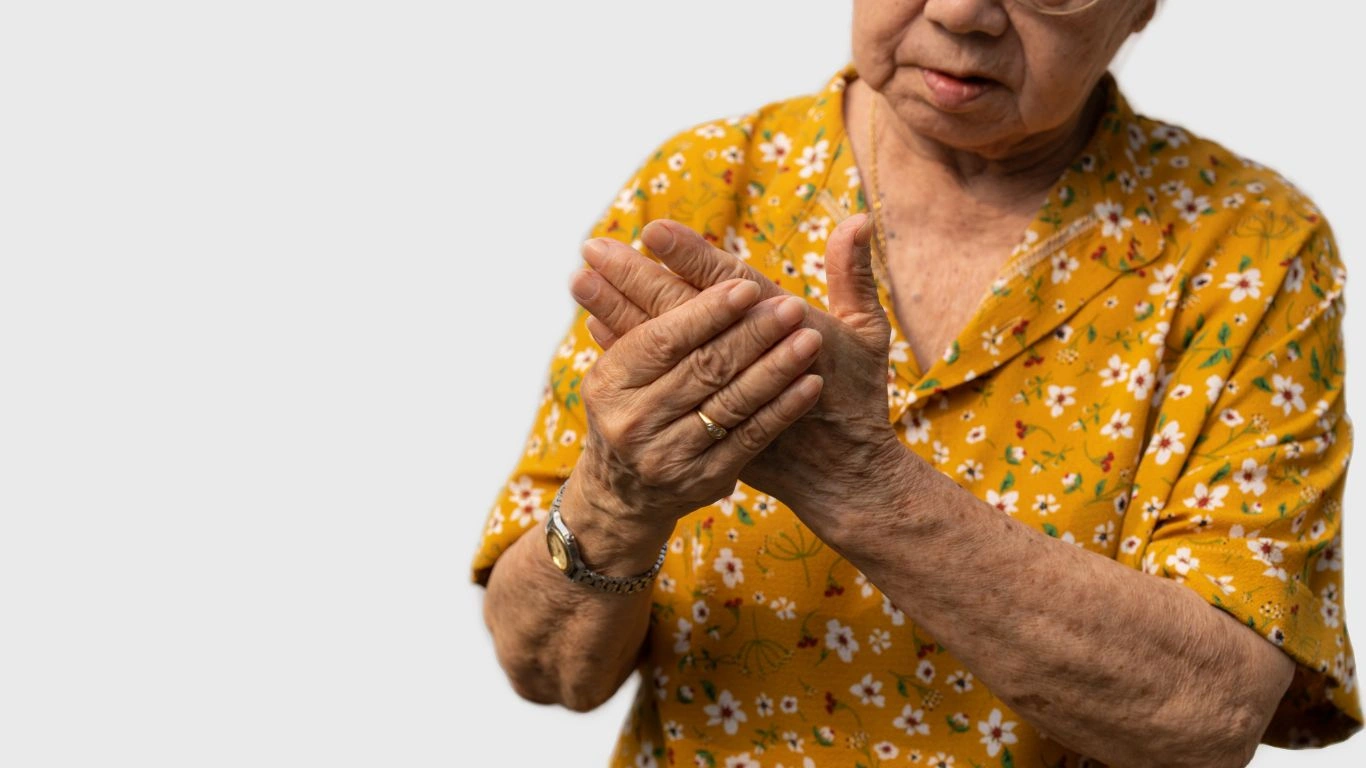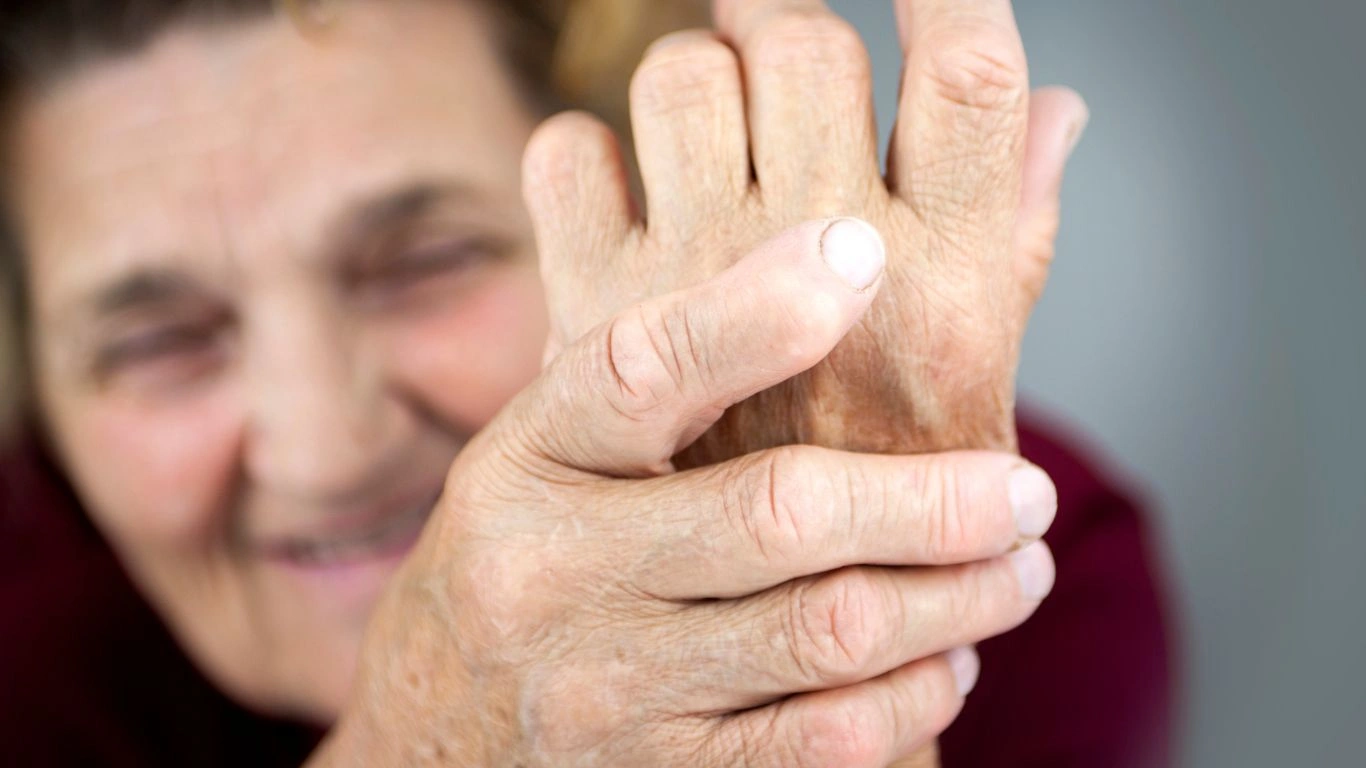Chronic Fatigue Syndrome and Rheumatoid Arthritis: A Struggle Shared
Chronic fatigue syndrome and rheumatoid arthritis are two complex conditions that often overlap in ways that many people may not fully understand. As a Rheumatology Nurse Practitioner, I’ve seen first-hand how the experience of chronic fatigue can significantly impact patients with rheumatoid arthritis. It’s not just about physical exhaustion; it’s about a sense of being drained in every part of your life—mentally, emotionally, and physically. If you’re managing both of these conditions, you’re likely familiar with the daily battles that come with them. In this article, I’ll share insights, personal experiences, and practical tips for navigating the challenges of chronic fatigue syndrome and rheumatoid arthritis. Trust me, you’re not alone in this, and there are strategies that can help.
What is Chronic Fatigue Syndrome?

Chronic fatigue syndrome (CFS) is often misunderstood, but for those who live with it, it’s a debilitating condition that can feel like an invisible weight. It’s characterized by extreme tiredness that doesn’t go away with rest. It’s more than just feeling “a little worn out.” The fatigue that comes with CFS is profound and can interfere with all aspects of life. The exact cause remains unclear, but many believe it’s a result of a combination of factors, including viral infections, immune system issues, and even mental health challenges.
For patients with rheumatoid arthritis, the fatigue can become even more intense. Rheumatoid arthritis (RA) is an autoimmune condition where the body’s immune system attacks its joints, causing pain, swelling, and stiffness. But it doesn’t stop there—RA can also lead to systemic inflammation that impacts other organs and systems, contributing to chronic fatigue. Combine the chronic pain from RA with the profound tiredness from CFS, and the result can be overwhelming. This isn’t just about needing a nap here and there—it’s a persistent state of exhaustion that no amount of rest seems to remedy.
Why Does Fatigue Happen in RA?
Understanding why chronic fatigue happens in rheumatoid arthritis requires a deeper dive into the inflammatory processes at play. RA triggers a constant inflammatory response in the body, and this inflammation can spread beyond the joints. The fatigue isn’t just caused by the physical toll of pain and stiffness; it’s also a result of this systemic inflammation that affects the body’s ability to function properly. It’s as if your body is constantly in fight-or-flight mode, which can leave you feeling completely drained.
Furthermore, when you’re constantly managing pain, your body uses up more energy than usual. This can make even the simplest tasks feel like monumental efforts. For many patients, the combination of joint pain, swelling, and this unrelenting fatigue can feel like an ongoing battle. You might find yourself struggling to even get out of bed some days, or perhaps you can push through the pain but then feel completely wiped out by the afternoon.
Linking Chronic Fatigue Syndrome and Rheumatoid Arthritis

Now, if you have both rheumatoid arthritis and chronic fatigue syndrome, you’re facing a double-edged sword. While the two conditions are separate diagnoses, they are often found together. It’s not uncommon for someone with RA to also be diagnosed with CFS or experience similar symptoms. The overlapping symptoms of pain, fatigue, and difficulty with daily activities can make it hard to differentiate between the two, and sometimes, patients may feel as though they’re being told that their symptoms are “all in their head.” This can be incredibly frustrating.
In my years of experience, I’ve worked with countless patients who feel dismissed by doctors when they mention their overwhelming fatigue. Many times, this fatigue is seen as a secondary symptom of RA, rather than as a condition in its own right. This misunderstanding can delay the diagnosis of CFS and lead to more confusion and frustration for the patient. That’s why it’s so important to look at both conditions as interconnected rather than separate, and to address them both comprehensively. Recognizing that the fatigue is real—and not just a part of RA—is the first step in improving quality of life.
Managing Both Conditions Simultaneously
When you’re dealing with both rheumatoid arthritis and chronic fatigue syndrome, the management strategy needs to be holistic. It’s not just about addressing one symptom or one condition; it’s about finding a balance between managing pain, reducing inflammation, and conserving energy. Here are some practical tips that can help:
- Prioritize rest: It might seem counterintuitive, but taking breaks throughout the day can actually help you maintain energy levels. Don’t feel guilty for resting—your body needs it!
- Exercise mindfully: While it might seem like exercise would exacerbate fatigue, gentle movement like walking, yoga, or stretching can actually improve your energy levels. It’s all about pacing yourself.
- Manage pain effectively: Use medications, heat/cold therapy, and physical therapy to help reduce joint pain. The less pain you have, the more energy you’ll likely have to manage fatigue.
- Get a good night’s sleep: Aim for quality sleep. Chronic pain can interfere with rest, so focus on creating a relaxing nighttime routine to help improve sleep quality.
The Role of Nutrition and Hydration

Nutrition plays an essential role in managing both chronic fatigue syndrome and rheumatoid arthritis. A well-balanced diet can help reduce inflammation and support overall energy levels. Anti-inflammatory foods, like those rich in omega-3 fatty acids (think salmon, walnuts, and flaxseeds), can be beneficial for RA. Likewise, staying hydrated is crucial—dehydration can worsen fatigue and make joint pain feel more intense.
It’s also important to note that some people with RA may develop food sensitivities or gut issues, which can contribute to fatigue. Working with a dietitian who specializes in autoimmune diseases can help tailor a nutrition plan that works for your specific needs.
Exploring the Link Between Chronic Fatigue Syndrome and Rheumatoid Arthritis

As we continue exploring the intersection between chronic fatigue syndrome and rheumatoid arthritis, it’s important to recognize how both of these conditions deeply affect daily life. For those with RA, the physical symptoms like joint pain, swelling, and stiffness are the most noticeable. But when combined with the deep, unrelenting fatigue of CFS, the daily struggle becomes more complex. I’ve seen countless patients experience frustration as they try to explain their exhaustion to friends, family, and even doctors who might not fully understand what they’re going through. It’s not just about “being tired”; it’s about a profound and sometimes overwhelming sense of fatigue that doesn’t let up, no matter how much rest is taken.
In my experience, when both conditions are present, they create a vicious cycle. The inflammation and pain from rheumatoid arthritis can trigger or worsen the symptoms of chronic fatigue syndrome. Similarly, the exhaustion of CFS can make it much harder to deal with the physical demands of RA. This dual burden makes it difficult to know where to begin with treatment, and it’s something that requires careful, individualized management strategies. Let’s dive deeper into how both conditions influence each other and what that means for daily living.
Impact on Mental Health: The Hidden Struggle

One area that often gets overlooked in the discussion about chronic fatigue syndrome and rheumatoid arthritis is mental health. It’s easy to focus on the physical aspects—pain, swelling, and fatigue—but the emotional toll these conditions take is just as real. When you’re constantly battling fatigue and physical pain, it’s not just your body that suffers. Your mental well-being can take a significant hit, too.
Patients with RA and CFS frequently report feelings of frustration, anxiety, and even depression. I’ve seen it firsthand in my practice—patients who start out as optimistic and hopeful, only to find themselves emotionally drained over time. It’s hard to stay upbeat when you’re exhausted all the time, and dealing with chronic pain only adds to that emotional burden. The unpredictability of both RA and CFS can cause a sense of helplessness and isolation, which is why it’s so important to take a holistic approach to care that includes mental health support.
Breaking the Isolation: Reaching Out for Support
One of the best ways to cope with the mental health challenges of chronic fatigue syndrome and rheumatoid arthritis is to connect with others who understand what you’re going through. I can’t stress enough how important it is to find a support group, whether it’s an online community or a local group of people with similar experiences. You might be surprised how validating it can feel to talk with someone who truly gets it, rather than feeling like you have to explain yourself over and over again.
Additionally, seeking professional help from a therapist or counselor who specializes in chronic illness can be incredibly beneficial. Cognitive-behavioral therapy (CBT) is particularly helpful for people dealing with chronic conditions, as it can teach coping mechanisms and help shift negative thinking patterns. Managing the emotional side of these conditions is just as important as managing the physical symptoms, and it’s a critical component of any treatment plan.
Pharmaceutical Treatment: What Works and What Doesn’t?

When it comes to treating both rheumatoid arthritis and chronic fatigue syndrome, there’s no one-size-fits-all solution. Each person responds differently to treatment, and what works for one patient may not work for another. That being said, the goal of treatment is to reduce inflammation, alleviate pain, and help manage fatigue. In my practice, I’ve seen various approaches work for different people, but it’s crucial to take a personalized approach based on each patient’s unique needs and symptoms.
For rheumatoid arthritis, the most common medications are disease-modifying antirheumatic drugs (DMARDs) and biologics. DMARDs work by slowing down the progression of RA and reducing joint damage, while biologics target specific parts of the immune system to reduce inflammation. These medications can be life-changing, helping patients regain some mobility and manage their pain.
However, while these treatments can effectively address RA symptoms, they don’t always help with chronic fatigue syndrome. In fact, many RA medications may not directly target fatigue at all. This is why managing CFS often requires a different set of tools. In some cases, doctors may prescribe medications to help with sleep disturbances, pain management, or even to address underlying conditions like depression, which can contribute to the feeling of fatigue.
Non-Pharmaceutical Treatments: A Complementary Approach
Alongside medications, there are several non-pharmaceutical treatments that can help improve quality of life for those managing both chronic fatigue syndrome and rheumatoid arthritis. Physical therapy, for example, can be incredibly helpful for patients with RA to maintain joint mobility and strength. While it may sound counterintuitive to exercise when you’re already exhausted, gentle, tailored exercises can actually help manage symptoms and improve overall energy levels.
Another useful treatment for chronic fatigue syndrome and rheumatoid arthritis is massage therapy. Many patients report feeling a significant reduction in muscle tension and overall fatigue after a session. Of course, always check with your healthcare provider before starting any new therapy to ensure it’s appropriate for your specific condition. But in my experience, combining traditional treatments with complementary therapies like physical therapy and massage can make a world of difference for patients.
Diet and Lifestyle Changes: Fueling the Body
As we’ve discussed, both chronic fatigue syndrome and rheumatoid arthritis require a comprehensive approach to treatment. One often-overlooked aspect is diet. A healthy, balanced diet plays a crucial role in managing these conditions. For RA patients, an anti-inflammatory diet can help reduce flare-ups and pain. Foods rich in omega-3 fatty acids, such as fish, nuts, and seeds, can be particularly helpful in reducing joint inflammation.
For those with chronic fatigue syndrome, a nutrient-dense diet is essential for maintaining energy levels. It’s not just about what you eat but also when you eat. Many patients with CFS find that eating smaller, more frequent meals throughout the day can help prevent the post-meal crash that often comes with this condition. I always advise my patients to focus on whole, unprocessed foods and avoid sugar and processed carbs, which can contribute to energy crashes.
Additionally, staying hydrated is critical for managing both conditions. Dehydration can exacerbate joint pain and worsen fatigue, so make sure you’re drinking plenty of water throughout the day. Herbal teas, particularly those with anti-inflammatory properties, like turmeric or ginger, can also be a soothing and beneficial addition to your daily routine.
Living with Chronic Fatigue Syndrome and Rheumatoid Arthritis: Day-to-Day Strategies

By now, we’ve talked a lot about the challenges of living with both chronic fatigue syndrome and rheumatoid arthritis, but let’s dive into some real-world, day-to-day strategies that can help make life just a little bit easier. In my practice, I’ve seen that the key to managing these conditions is often about balance. It’s finding ways to conserve energy, manage pain, and make adjustments so that you can continue doing the things you enjoy (or at least, the things you need to do!).
One of the most important things I tell my patients is to embrace the idea of “pacing.” It’s all about managing your energy throughout the day. You can’t expect to do everything at once, and that’s okay. Prioritize your tasks and give yourself permission to take breaks. A lot of people feel guilty for resting, but when you’re managing chronic fatigue and pain, rest is not a luxury—it’s a necessity.
Pacing: The Art of Doing Less but More Effectively
Pacing can be tough, especially when you have a to-do list that never seems to get shorter. But the truth is, doing less but being more efficient with your energy can lead to better results in the long run. For example, instead of trying to clean the entire house in one go, try breaking it down into smaller chunks and space them out over the week. Similarly, if you have multiple appointments or errands to run, try scheduling them in a way that allows for rest periods in between. Over time, you’ll start to notice that pacing helps keep you from hitting that dreaded “wall” of exhaustion.
Another important aspect of pacing is knowing your limits. This can be tough to figure out at first, especially when you’re used to pushing yourself, but it’s crucial to recognize when your body is telling you it’s time to slow down. I often tell patients to listen to their bodies and stop when they start feeling that deep fatigue setting in. The key is to rest before you reach the point of complete burnout.
Adjusting Your Environment for Comfort and Accessibility

In addition to pacing, making changes to your environment can significantly improve your quality of life. When you’re dealing with chronic pain and fatigue, it’s important to create spaces that are comfortable and conducive to rest and relaxation. Small adjustments around the house can make a big difference. For example, investing in ergonomic furniture that supports your joints can help reduce strain while sitting or standing for long periods. The less pain you experience in your environment, the more energy you’ll have for other tasks.
For those with RA, managing joint pain during daily activities can be tricky. Tools like reachers or grabbers, cushiony mats for standing, and even raised toilet seats can make life a little easier. In my experience, making simple changes like these can give patients the independence they need to carry on with everyday tasks without additional strain.
If fatigue is a big issue, you might want to consider how you’re organizing your home. Keep essentials within easy reach so you don’t have to constantly stretch or bend. Also, think about how your daily routine is structured. Can you delegate tasks to others in the household? Even if it’s just once a week, getting help can provide relief and prevent you from over-exerting yourself.
Staying Social and Maintaining Relationships
Social isolation can be another challenging aspect of managing chronic conditions like RA and CFS. When you’re constantly battling fatigue or dealing with pain, it’s easy to cancel plans or withdraw from friends and family. However, maintaining social connections is crucial for mental health and overall well-being. Even on the days when you feel absolutely drained, try to stay in touch with loved ones. It doesn’t have to be a long conversation or a big social event—sometimes just sending a text or making a brief call can help you feel connected and supported.
It’s important to be upfront with those around you about your conditions. Let them know how you’re feeling, and don’t be afraid to ask for what you need. Whether it’s understanding when you need to rest or offering help with errands, open communication can make a huge difference in maintaining strong relationships. As a healthcare provider, I’ve seen many patients feel isolated because they don’t want to “burden” others with their struggles. But the truth is, your loved ones likely want to help—you just need to let them know how.
Finding Joy in Small Moments
Finally, it’s essential to find joy in the small moments, even when living with chronic fatigue syndrome and rheumatoid arthritis. It’s easy to get bogged down by the daily struggles, but taking the time to savor the good things can make a world of difference in your mental health. Whether it’s a quiet moment with a good book, a peaceful walk in nature, or spending time with a loved one, these small, joyful moments can help lift your spirits and remind you that life is still full of things worth living for.
For some people, hobbies or creative outlets like painting, knitting, or gardening can provide a sense of purpose and fulfillment. These activities might not only offer a distraction but also help you feel a sense of accomplishment—even on days when you feel physically drained. Finding something that brings you joy, no matter how small, is an important part of the healing process.
References and Resources
Disclaimer: The information shared in this article is intended for educational purposes only and should not replace professional medical advice. Always consult with your healthcare provider before making any changes to your treatment or lifestyle. The content here reflects my personal experience as a Rheumatology Nurse Practitioner and is based on my observations of patient care and research in the field.

Tarra Nugroho is a dedicated Nurse Practitioner with a strong foundation in family and preventive care. She brings both compassion and clinical expertise to her practice, focusing on patient-centered care and health education. As a contributor to Healthusias.com, Tarra translates medical knowledge into clear, empowering articles on topics like women’s health, chronic disease management, and lifestyle medicine. Her mission is simple: help people feel seen, heard, and informed—both in the clinic and through the content she creates. When she’s not caring for patients, Tarra enjoys weekend hikes, plant-based cooking, and curling up with a good health podcast.






